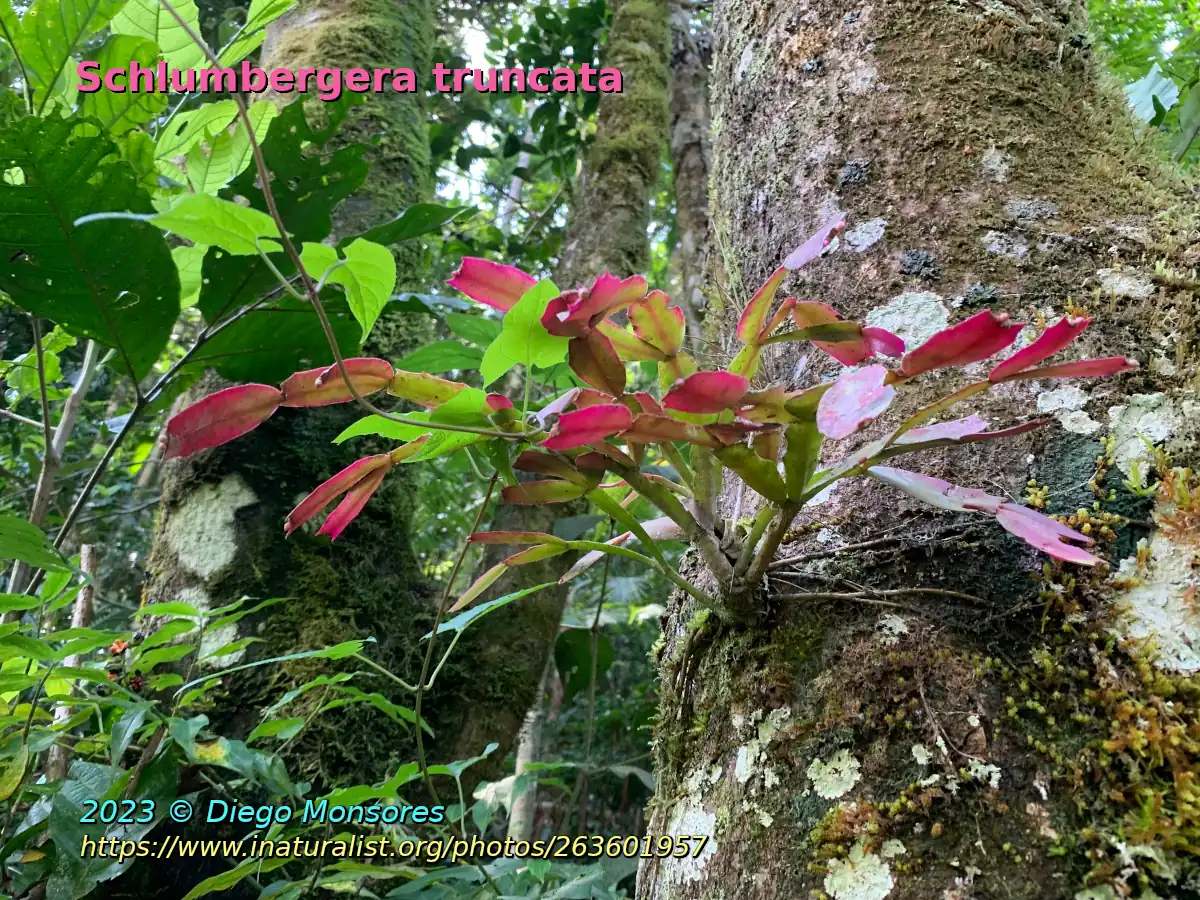










Schlumbergera truncata - Christmas Cactus
4 unrooted cuttings
-
Tropical Cactus grown as an indoor ornamental plant for its vegetation and spectacular winter flowering
Schlumbergeras are renowned as easy flowering plants contrary to orchids
Leafless vegetation, composed of chlorophylled Cladodes, fleshy, flattened, shield-shaped
(5cm long x 2cm wide x 3mm thick)
The cladodes attach in chains forming poorly branched stems with a spreading and drooping habit, reaching 80cm long in the oldest plants, and lignifying over the years to form a real trunk and strong, rigid branches
Growth is slow, with an increase in stem length of 3 to 5 cladodes per year
The root system is adapted for Epiphyte and Litophyte life
Flowering occurs in winter
The flowers bloom at the end of the stems, at the end of the last cladode, 1 to 5 flowers per cladode
A flower measures around 10 centimeters long and 3-4 cm in diameter, is fragrance-free, hanging downwards to ease pollination by Hummingbirds
Petals and Sepals are very brightly colored in pink-red and orange-red tones
(all colors from yellow to magenta including white in modern hybrids)
It is followed by a small berry, pink when ripe, which contains a few seeds scattered by birds
The Genus Schlumbergera contains 9 Species
(S. bridgesii, S. kautskyi, S. lutea, S. microsphaerica, S. opuntioides, S. orssichiana, S. rosea, S. russelliana, S. truncata)
Schlumbergeras originate from the coastal mountain forests of Southeast Brazil
(states São Paulo, Rio de Janeiro, Minas Gerais, and Espírito Santo - latitude ≈ 20-23° south, altitude ≈ 700-2800m)
The Climatic Conditions are particularly humid (regular drizzle and fog) and relatively cool at night
Schlumbergeras often grow clinging to moss-covered trunks/branches and rock crevices, feeding on whatever small pockets of decaying organic substrate they can find there

Nearly a thousand interspecific hybrids were identified in the early 2000s, which are marketed today under the names Christmas Cactus and Easter Cactus
(the latter are now categorized as Rhipsalidopsis)
They are mainly divided into 4 groups: (1) Truncata, (2) Buckleyi, (3) Reginae, and (4) Exotica
Only the species Schlumbergera truncata and some of its hybrids flower around the Christmas period
(other species flower earlier, in autumn, or later in spring, like the Easter cactus)
-
Schlumbergera truncata is indeed a true cactus, but it is a tropical rainforest cactus and not a desert cactus
Therefore, it likes water, humidity, and freshness, and fears aridity, heat, and the sun
It spreads spontaneously by cladode cuttings, when they detach under the mechanical action of an animal or a storm, or by layering when touching a branch or a trunk
Consequently, rooting cladodes is easy and almost guaranteed since it happens spontaneously in nature
(this is how Schlumbergeras are propagated in horticulture)
To root the cladodes that you will receive, you can use one of the following 3 techniques, listed in order of decreasing preference
Place the cuttings in the light near a window, avoiding direct or too bright / too hot sunlight
(especially in summer)
The ideal temperature for rapid rooting is 20-25°C
Keep the substrate always moist but not damped to avoid rotting
After 3 weeks, roots will have grown, and the cladodes will begin to bud
If you have chosen cutting techniques (1) or (2), it is time to place your rooted cuttings in potting soil for houseplants, carefully so as not to damage the young roots
You can plant all your cuttings together in a single pot and get a pretty clump of flowers more quickly, or plant them alone or in pairs
Next, grow your Christmas Cacti as follows:
If you have a garden, Schlumberegra truncata will appreciate 3-4 months of vacation in the shade of a tree, from mid-May to mid-September
Bring indoors as soon as night temperature gets too cold
Disease-free, pest-free
-
If you have followed the growing tips above, your Schlumbergeras will grow a little more each year until, after a few years, they become magnificent plants capable of producing cascades of flowers
The flowering of the Christmas Cactus is triggered by the reduction in day length and by cooler temperatures
Usually, the flower buds begin to form in mid-October, and slowly grow bigger until blooming between the beginning of December and the end of January
A second flowering often takes place in February-March once the first one has finished, but only if daily light duration stays low
Making Schlumbergera truncata flower is really easy, this is a beginner's plant
However, if your Schlumbergeras are not flowering, make sure of the following points:
-
The duration of Schlumbergera's flowering depends directly on the temperature
In an overheated apartment, it will not last more than 10 days
In a cool room at 15°C, it will last 4 to 6 weeks
You can get this result by putting your Schlumbergeras in a cool room at night and lowering the heating when you're not at home
Payment :
PayPal < 150 €
Check < 850 €
Bank Wire > 149 €
Thank you for your kind understanding